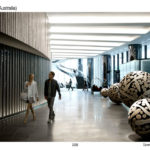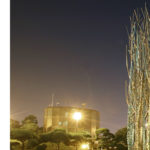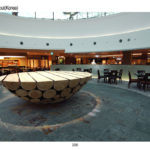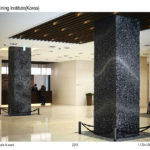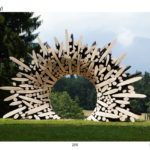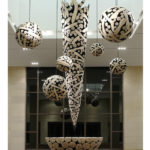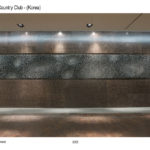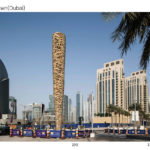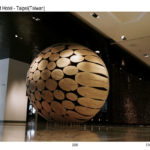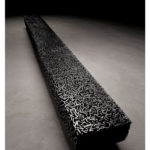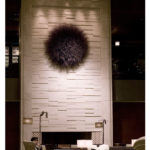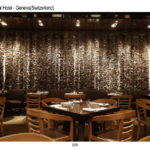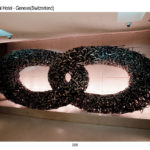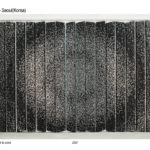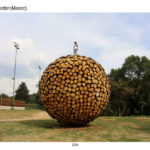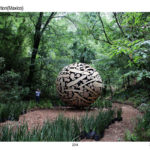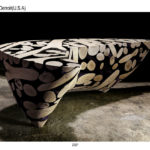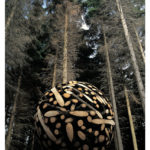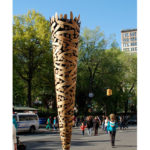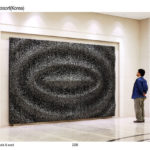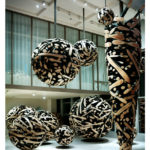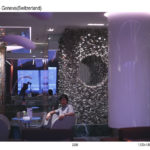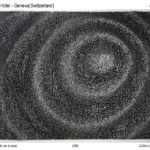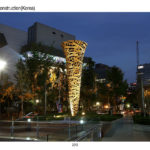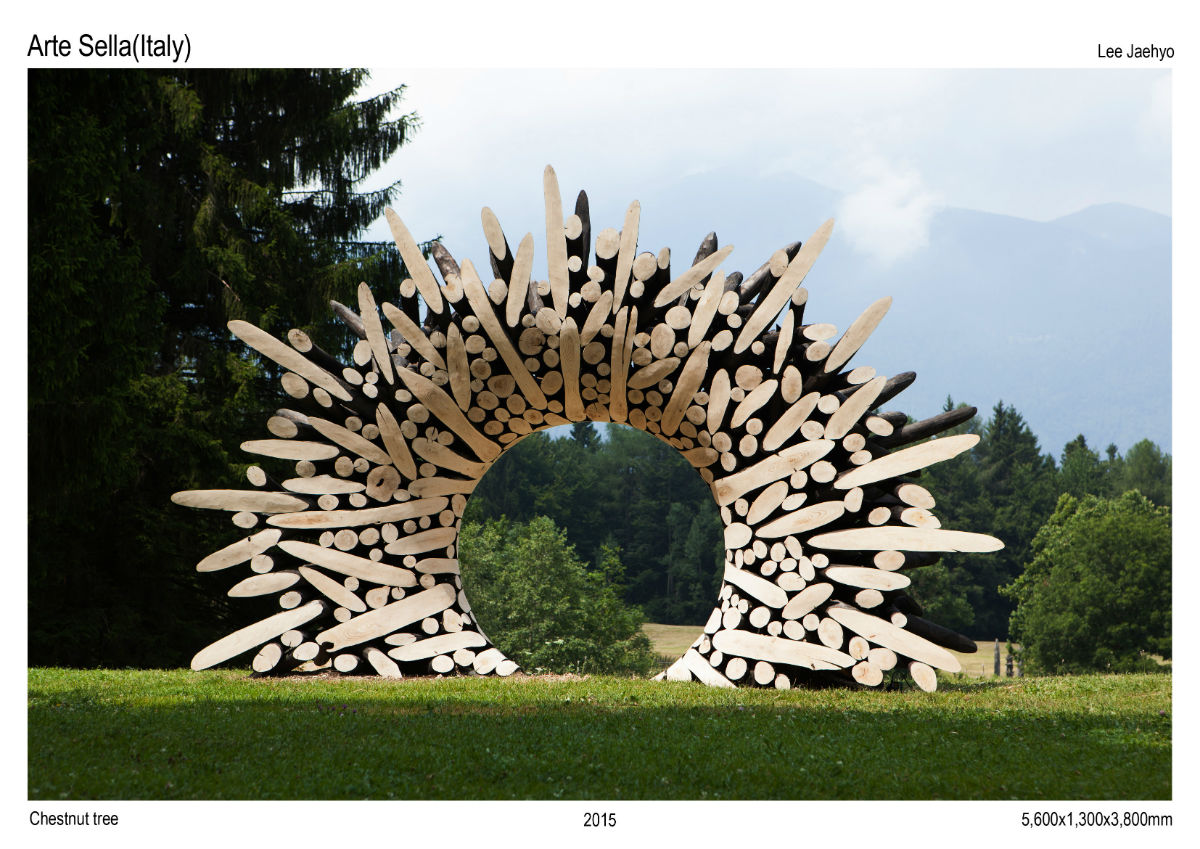
Artist Bio
A much-respected artist, Lee Jaehyo was born in 1965 in Hapchen, Korea. In 1992 he received a B.F.A in Plastic Arts, Hongik University. His mixed-media installations take inspiration from the natural world and he utilizes wood collected from local lumber jacks and debris piles to create his work.
His signature geometrical shapes reference the natural world while elevating and transforming common objects into otherworldly art pieces. He reveals beauty in what is seen yet unnoticed. His large-scale works combine a variety of organic and manufactured elements such as wood and stones, nails and bolts, and fragments of steel that are cut, assembled, and laminated to reveal his sculptural expression.
Lee’s functional (stools, benches, tables) and functionless works have been exhibited extensively in Asia, America, and Europe where collectors and art lovers are fascinated with his wooden and metal poetry.
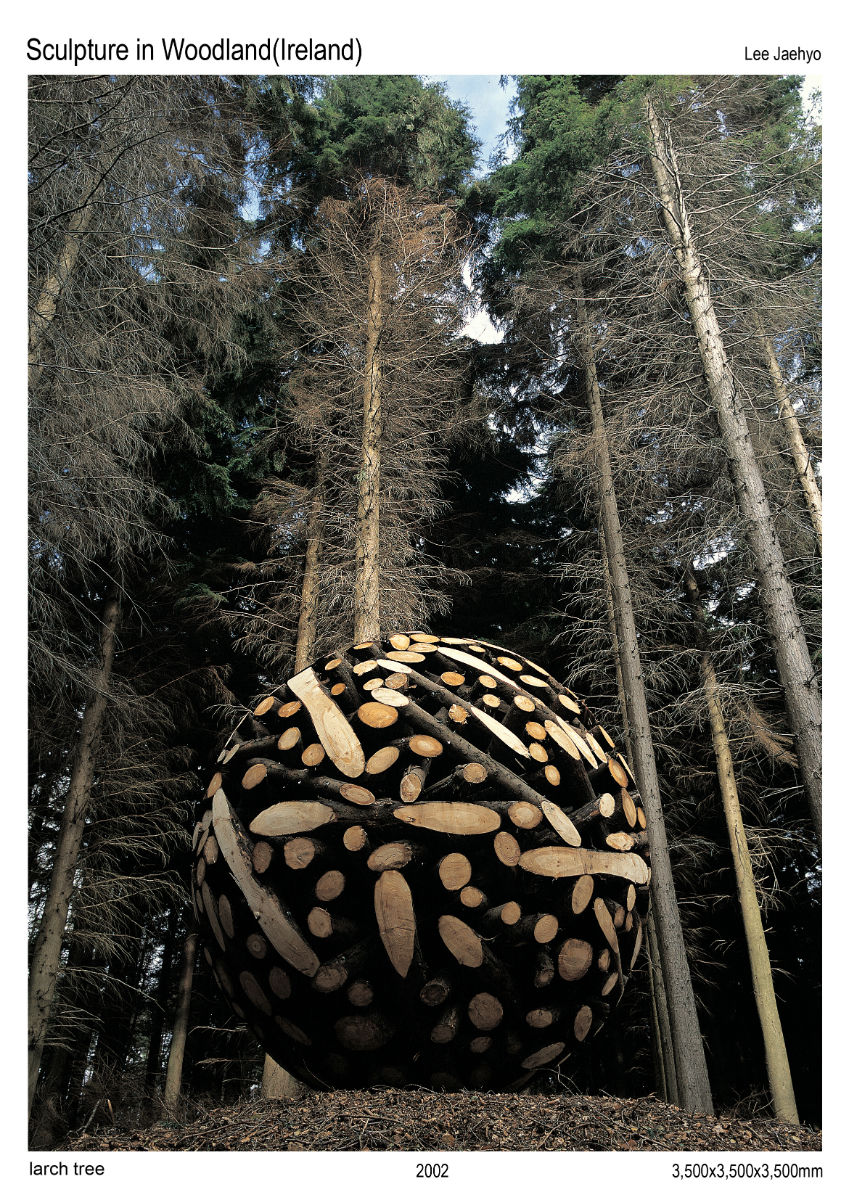
Interview
Artist: Lee Jaehyo
Who or what has been the biggest influence on your approach towards art?
My high school art club members influenced me a lot. I wanted to be a sculptor when I was in the first year in high school. I have never thought to have a different job in my life.
Where do you work? What is your studio like?
I work at my studio in a city called Yangpyeong which is a one-hour ride from Seoul. It has exhibition halls, as well.
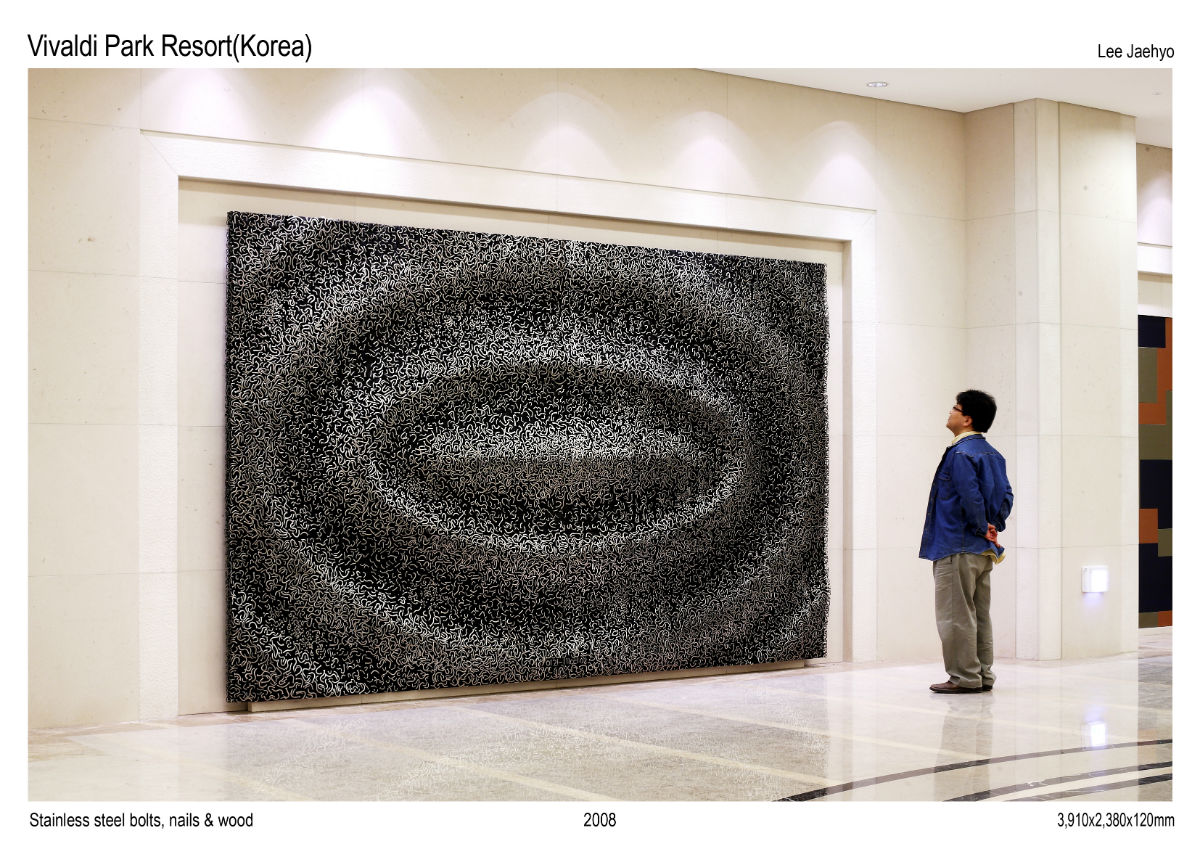
Who or what inspires you artistically? What artist do you admire?
I’ve heard that the world where we live is the 3rd dimension and there must be a 4th dimensional world somewhere around us. That is our spiritual world – what is called past life, this life and next life. Inspiration comes to me when I’m in the spiritual world. We say that “we get inspiration” and not that “we make inspiration” because (inspiration) comes from another world. I don’t know exactly from which it comes but I think I get inspiration when I dream. It is stored in our unconsciousness like books arranged in a bookcase behind a closed door. This inspiration in my unconsciousness is jumbled with the situation in my dream and a similar situation in my reality. I get this kind of inspiration when I just fall asleep, right before the REM stage. That’s how an idea pops up in my mind. However, for my usual artworks, I get an idea right away when I look at the object when wide awake.
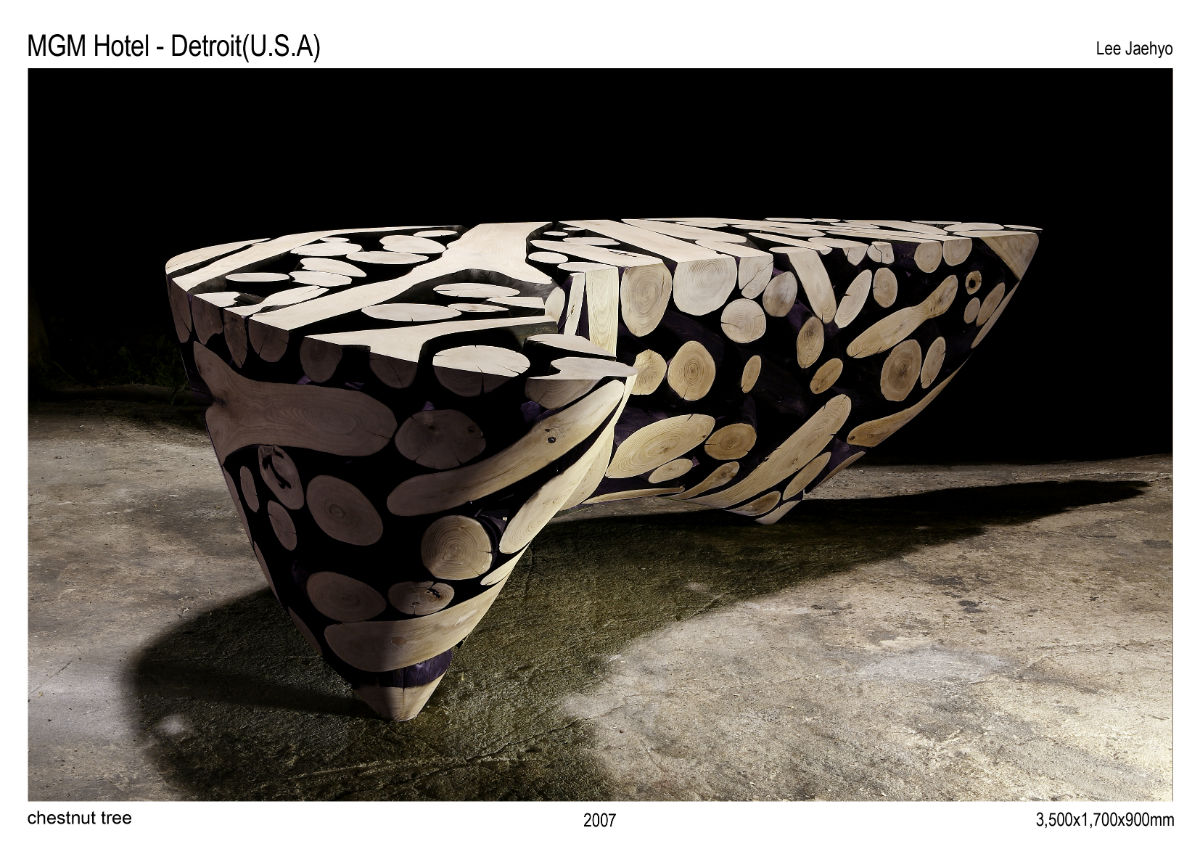
How and when did you adopt your style and medium?
I grew up in the countryside and I guess that’s where my sensibility comes. Normally I don’t talk much but it seems that nature talks to me, which is beautiful. I only put the natural media together to make art based on nature’s talk. When it comes to medium, I like wood and nails. You might say nails are artificial, but they have been used for such a long time in my works that they seem to me just as natural and very familiar to me. I can say they are extended from the wood, my main medium, since there are nails in the wood works and wood inside the nail works. Both are intertwined and compatible. I’ve been working with those media since I graduated from university.
Where do you source the wood for your pieces?
Sometimes I ask the lumberjacks nearby to get the wood based on my new work. Other times, even though I don’t have any specific plans, I come across attractive wood, pile it up and then an idea is elicited from it.
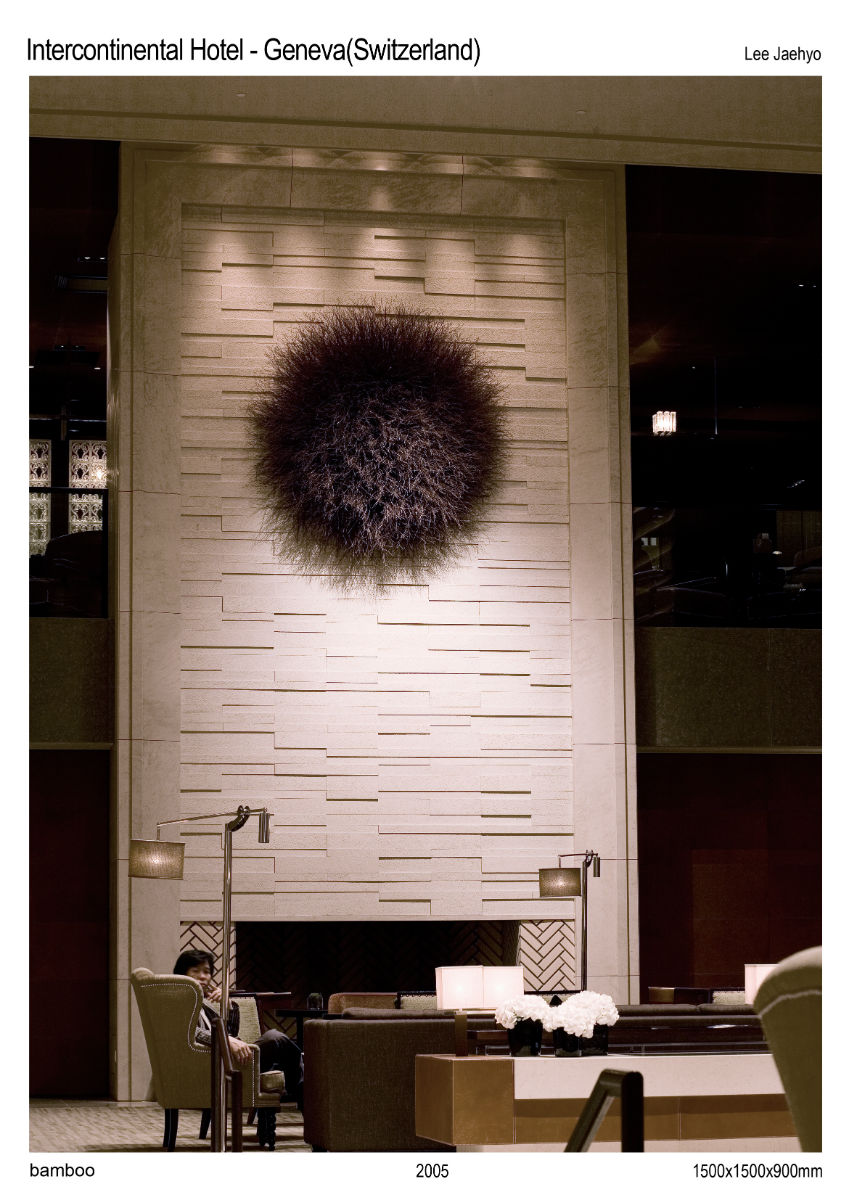
Your work expresses an immersive appreciation of the natural world. How does the outdoor landscape influence the work?
I don’t like to place my works next to some flowers. Likewise, I am scared when my artworks are installed in a beautiful forest. That’s because no matter how beautiful my artworks are, they are humble in front of nature. For the same reason, I display my works at exhibition halls surrounded by white walls. I wish my artworks to stand out wherever they are. You said my works express the natural world well -that’s not because my works express the nature itself but because I use natural media to express it. On top of that, receiving good responses from viewers make them more meaningful.
How would you describe the evolution of your work?
I like a simple sphere shape. Some of my works are a little bit transformed from the sphere, which doesn’t make sense to me. I have created those kinds of works ever since I worked as a sculptor. At times I am tempted to make something different, but I don’t know what that will be for now.
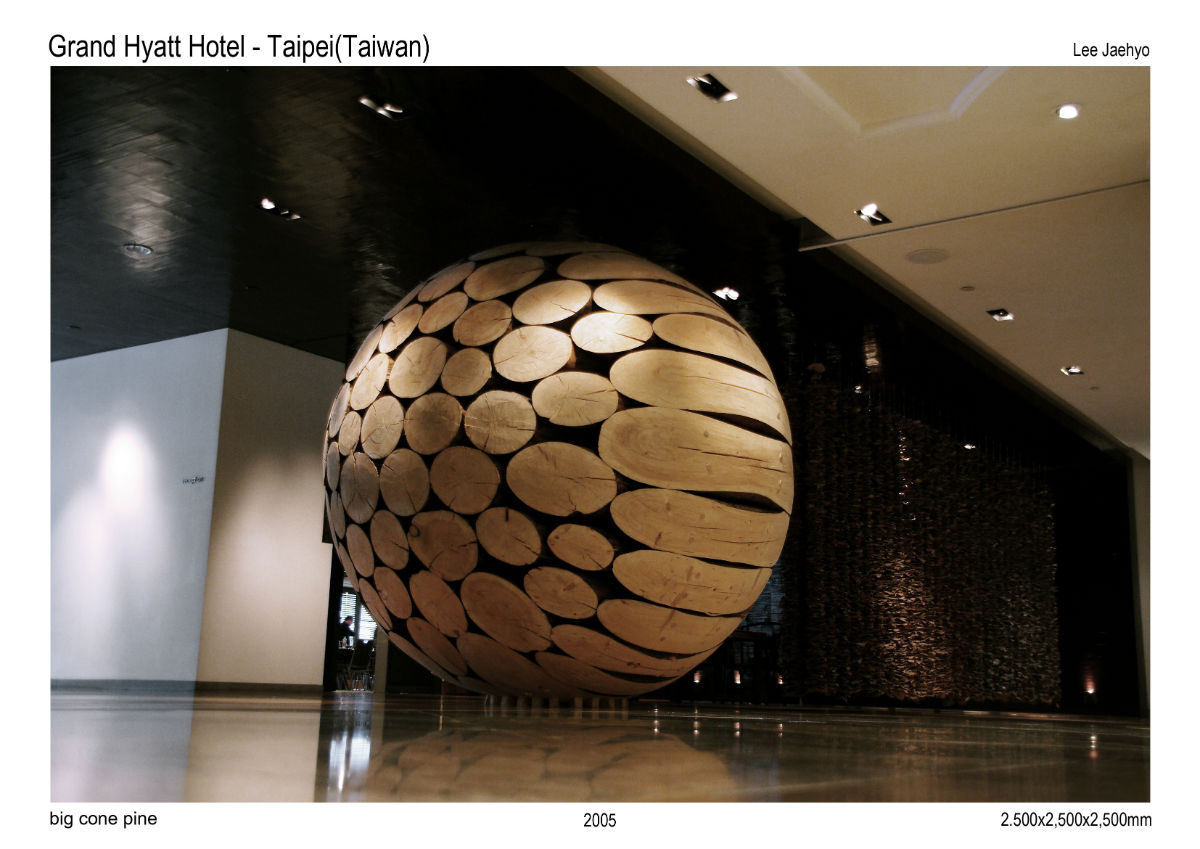
What are you doing when you’re not creating? What hobbies do you have?
Not much. From my understanding, hobbies are what make life more fun, but for me, when I do something fun, it becomes art. Other than making artworks, I find building houses a lot of fun. When I design my own studios and even the kennels of my dogs, I try to think something different and invent a new idea. It is so much fun to make what I have never seen of common stuff around my studios such as fences and benches.
What is your dream creative project?
I think artists’ lives should be art itself. Their lives should be taken as an art to the point where the words coming out of their mouths become art. Then they can be a great artist. My creative project is looking for something hidden in my brain. I don’t set specific goals. I just try to come across something unnoticed by myself. The ideas in my brain can be something mundane. However, feelings about the ideas can be different. Both the feeling and the medium that I accidently find attractive can convey something meaningful to others. Artworks are not something understood but something felt.
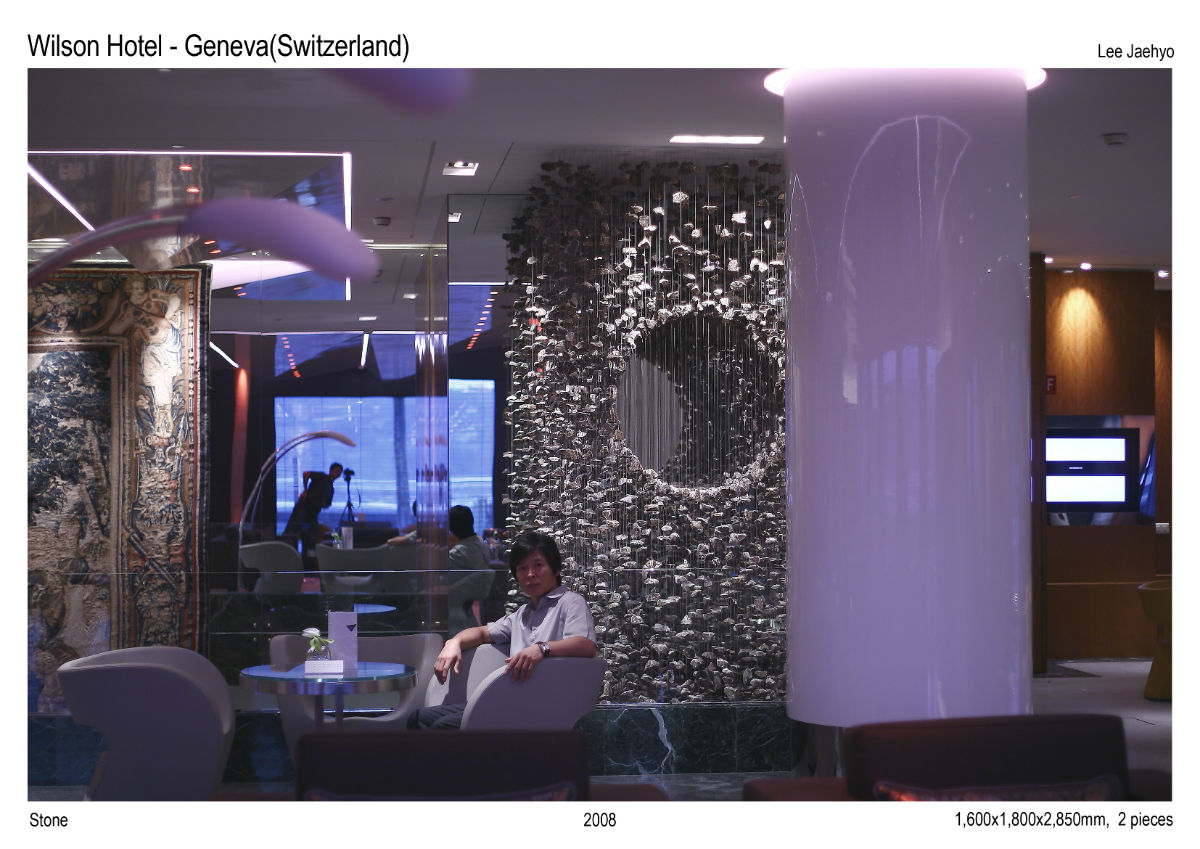
Finally, if you could collaborate with any artist alive or dead who would it be?
Personally, I like Andy Goldsworthy. But there is no one that I’d like to collaborate with because it is not then fully my own work.
https://www.youtube.com/watch?v=P6LTN2uf-3c
video courtesy of ARIRANG CULTURE
